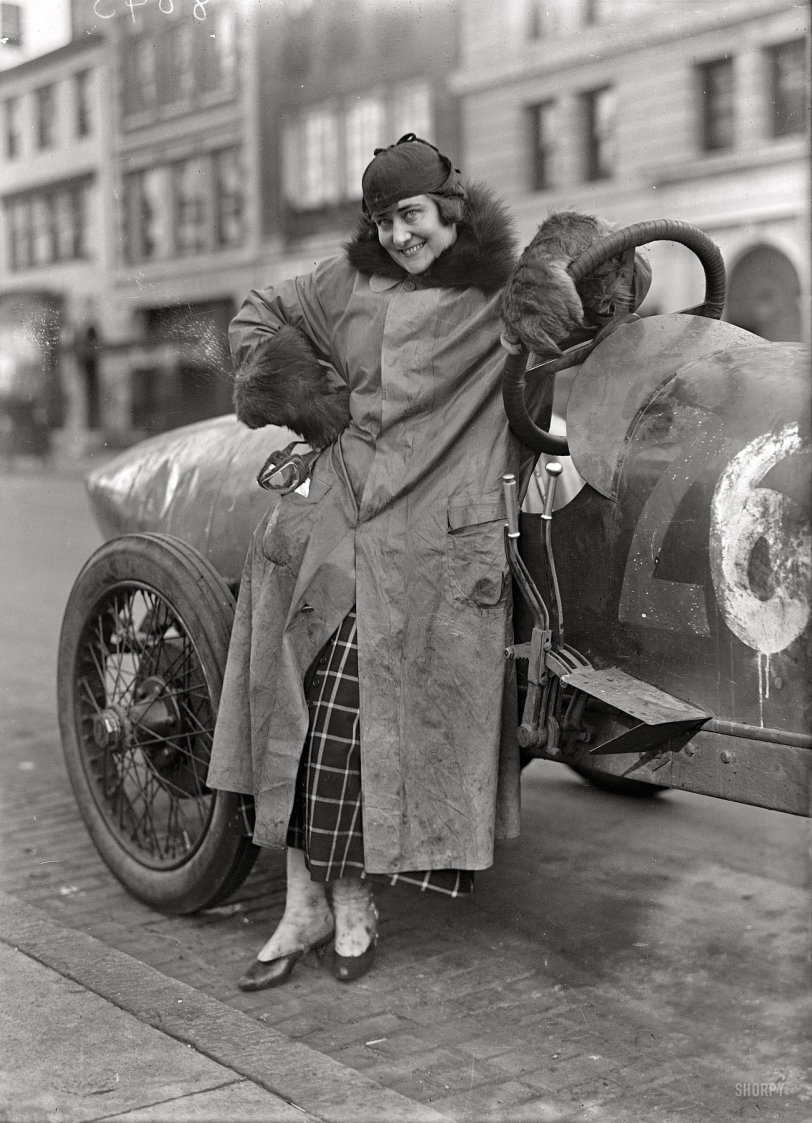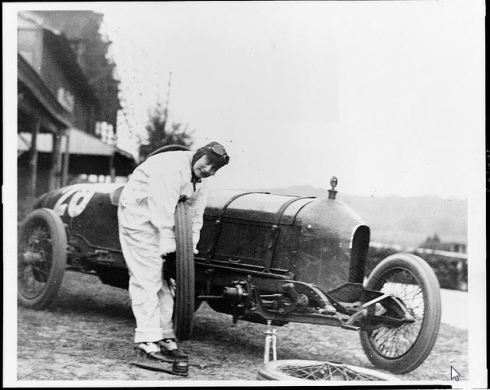


Framed or unframed, desk size to sofa size, printed by us in Arizona and Alabama since 2007. Explore now.
Shorpy is funded by you. Patreon contributors get an ad-free experience.
Learn more.

- S&P
- 1940 Zenith radio model 6G601
- Quality goes in before the name goes on!
- Snazzy skirt
- Carbon Arc Lamps
- Illuminate us
- I remember it well
- I can't prove it
- Complicated then, forgotten now
- Bryan-Stevenson
- Skinny is as skinny does
- How do you rest in peace
- Riding the footboards
- Alas, hidden from view
- Baldwin Diesels
- Exclusive pump
- Bananas, Oysters and Smokey Joe
- Details, Details
- What's that building to the left of the tower?
- Coal Barges
- Bromo-Seltzer
- Inner harbor
- The Basin
- What a headache!
- Giant stepladder?
- Yeah, it was cold
- Love those coats
- Link & Pin Days Remnant
- Baldwin 62303
- Baldwin VO-1000
Print Emporium
Fast Woman: 1915

Washington circa 1915. "Women auto racers. Miss Elinor Blevins." Our second visit with the racy actress. For details on the car see the comments under the earlier post. Harris & Ewing Collection glass negative. View full size.
Stutz
The automobile is a Stutz that is known as the Weightman Special. It is also shown in a previous Shorpy image here: https://www.shorpy.com/node/5363
Other images of the car can be found on the web including this one.

It's easy!
I drive a 1930 ford, much "newer" than this car, and a family sedan. To start it, you have to turn on the fuel petcock, set the fuel mixture, set the spark, set the hand throttle, pull the choke, depress the clutch, turn on the ignition, press the starter, release the choke and adjust the hand throttle for a comfortable idle speed.
If the battery is low and you have to hand-crank it, it's even more interesting. At least my car has front wheel brakes.
Do those gloves have claws on them?
Levers of Power
The outer lever is the handbrake, with a knob on top to disengage the locking mechanism. The inner one is the gearshift, with two forward positions and probably two back, one of which would be reverse. It's shown in neutral.
Mystery Levers
Cars had many more controls long ago than they do today. I'm myself old enough to remember the choke knob you pulled out before starting. Miss Blevins's car probably also had a spark advance control -- this was often on the steering column -- and of course brakes, a clutch, a gearshift, and an accelerator which could be a hand rather than a foot control. Often the foot accelerator was between the other two pedals if there was a foot brake, but it was also common to have individually controlled brakes (front and rear), with hand brakes about as common as foot brakes. Some early manufacturers thought front brakes were too dangerous and only gave you rears, so spinning out was less likely. But rear brakes are less effective than fronts because of the weight transfer of deceleration.
Has anyone established the make and model? One would think a successful actress could have hired someone to do a better job painting on the race number, and would have had the little dent in the rear quarter fixed!
The two levers on the side of the car are interesting. They are too massive for spark advance or choke. I'm guessing one is the rear brakes (I can see what appears to be a brake drum inboard of the rear wheel). What could the other be? They both move only fore and aft so a gearshift is not likely. There's no linkage leading forward so front brakes are unlikely.
Could it be a hand clutch? I've never heard of such a thing but at this early period, designers were often experimenting. What a terribly dangerous setup that would be, since gearboxes would have been non-synchromesh and double clutching would have been necessary. If the clutch was needed at the same time as the brake, who's steering the car?
Dirty business
This auto racing stuff must be some DIRTY BUSINESS! Check out her hosiery!
[Those are spats. - Dave]
I want those gloves!
This lady knows how to dress for the occasion.
























On Shorpy:
Today’s Top 5